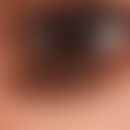Synonym(s)
DefinitionThis section has been translated automatically.
ClinicThis section has been translated automatically.
- The corrosive effect is usually delayed: at concentrations < 50% 1-8 hours, at < 20% up to 24 hours delay.
- Integument: Redness, burning, most severe lesions of the skin already from 0.3% hydrofluoric acid. Formation of coagulation necrosis and later colliquation necrosis with a tendency to progress into deep tissue layers. Very strong painfulness. Percutaneous absorption is possible: by inhibition of the citrate cycle CNS-symptomatic, nephro- or hepatotoxicity.
- Eyes: Redness, burning, corneal erosion and opacity.
- Gastrointestinal tract: abdominal pain, nausea, vomiting, bleeding, perforations.
- Respiratory tract: burns, shortness of breath, pulmonary oedema, pneumonia, permanent damage.
You might also be interested in
Complication(s)(associated diseasesThis section has been translated automatically.
TherapyThis section has been translated automatically.
- Immediate measures in case of hydrofluoric acid burns of the skin at the accident site:
- Rinsing under running water 3-5 min
- Remove contaminated clothing (wear protective gloves)
- Apply 2.5% calcium gluconate gel 5 mm thick with a spatula, rinse off after 2 minutes, apply again in a thick massaging action and leave on until admission to the clinic (put foil gloves on your hands)
- Alternatively: rinse with 10% calcium gluconate solution from ready-to-use ampoules, then sterile dressing for transport, keep moist with this solution.
- General accompanying therapy:
- All necessary measures resulting from the laboratory chemical findings and the results of cardiovascular diagnostics.
- Temporally limited, medium glucocorticoid administration e.g. Prednisolone 40-60 mg/day (e.g. Decortin H).
- Initial antibiotics with a broad aerobic and anaerobic spectrum in the presence of necroses, possibly as perioperative antibiotic prophylaxis. Targeted continuation after antibiogram.
Operative therapieThis section has been translated automatically.
- Early treatment: Within the first post-acidental hours in case of extensive degree 2 and 3 burns or in case of suspected nail bed involvement: prophylactic nail extraction.
- Late treatment: forced removal of all manifest necroses and, in the case of nail bed necroses, nail extraction and curettage of the nail bed.
TablesThis section has been translated automatically.
Treatment suggestions for circumscribed hydrofluoric acid burns after hospital admission in a symptom-free or low-treatment interval
Localization |
Measures |
Fingers/toes (forearms/lower legs) |
Regional intra-arterial calcium bolus injections 14 mg/kg bw |
Consider "prophylactic" nail extraction | |
Continuous continuation of the external 5% calcium gluconate treatment for 4-6 days | |
| |
Head/neck/torso (upper arms/thighs) |
Infiltration of the appropriate amount of a mixture of 5-10% calcium gluconate (max. 0.5 ml/cm2 10%) with 40 mg triamcinolone acetonide crystal suspension (Volon A) after calculation of the etched area |
According to individual decision 1% Lidocaine under consideration of the maximum doses | |
Consider vertical or tangential excision | |
Continuous continuation of the external 5% calcium gluconate treatment for 4-6 days | |
LiteratureThis section has been translated automatically.
- Foster KN et al (2003) Hydrofluoric acid burn resulting from ignition of gas from a compressed air duster. J Burn Care Rehabilitation 24: 234-237
- Hojer J et al (2002) Topical treatments for hydrofluoric acid burns: a blind controlled experimental study. J Toxicol Clin Toxicol 40: 861-866
- Huisman LC et al (2001) An atypical chemical burn. Lancet 358: 1510
- Sebastian G (1994) Practice-relevant therapy recommendations for hydrofluoric acid burns, dermatologist 45: 453-459
Outgoing links (1)
Chemical burn;Disclaimer
Please ask your physician for a reliable diagnosis. This website is only meant as a reference.




